At this point in the tape and for a short while Laing voices the characters, a voiceover of the voiceover. It’s strange: you can still hear the original voiceover but it’s followed almost immediately, like time-delayed sound or an echo, of Laing repeating (mostly verbatim) the original voice. You can picture Laing watching the 16 mm film in the dark somewhere, holding the recorder close to his mouth, repeating the voiceover in some terribly intimate way, as if he were witnessing some secret ritual that put him in grave danger, for there is an undeniable weariness and even sadness to his voice, as if these were the last words he might ever speak. I’ve italicized Laing’s voiceover of the voiceover.
“‘Gutman, yes,’ I said to Sergio, ‘but it is you for whom I fear. What about you?’
“‘Oh, there’s no hope for me!’ he said brightly, as if saying it might protect him, putting his hand upon my shoulder as he always did to indicate that our conversation had reached a point beyond which it could go no further. I suppose that’s why we had remained friends for so long: we knew when to draw the line, and when not to cross the line, while others drew lines only to cross them.
“I was the one to cut down Sergio’s body, days later, hanging from a cord not much thicker than a shoelace, from a lamppost at the edge of the city park. His trousers were bunched down around his ankles, his hands tied behind his back with his own bandana. There were scuff marks on the rusted lamppost pole where his heels had kicked. Tomás and I carried his body to Maria’s apartment (that smelled of lemons) nearby, and then onto the hospital in the backseat of her car, the air conditioning on full force, him lying there like the flesh that he was.
“Image number four is black and white. It’s a freeze frame. A long, empty hallway in what appears to be a school or hospital. There are gas masks or something scattered on the tiled hallway floor, and a symbol on the wall that I can’t quite make out. Not spray painted like you’d expect but neatly drawn in sharp lines, as if cut into the wall with a razor.
“In the hospital lobby, which stank of formaldehyde and burnt rubber, two men dressed as orderlies grabbed Maria and quickly taped-over her mouth and dragged her away down a fluorescent hallway. Tomás and I fled through the smeared glass doors back out into the parking lot, but as we ran (past the very car that held Sergio’s body) they overtook Tomás, as well, and would have taken me but for his fighting, which delayed them until I disappeared into the darkness, the night offering its own strange sort of bindings, the harsh hospital lights receding in the distance, the cool blank fields smelling of night dirt.
“The next night Toni didn’t answer his phone at first, and then later he did, except it wasn’t him, and I wondered if it’s true like the rumors suggested that a call can be traced so quickly through the heavy wire lines.
“Which is to come back to what gave me pause about the Gutman file: it was, as I noted right away, a little heftier than the others, something I first attributed to the stock of the paper, which felt slightly heavier in my hands.
“In other words, a forgery.
“Image five switches to color. It’s a slow forward-tracking shot down the same hallway from image four, intercut with brief flashes of another location, what appears to be a stadium at night, under bright lights, in the rain.
“As the principal architect of the second purge, Gutman was a despised (if largely unseen except for the fact of his name) man, widely known to be the author of the so-called ‘Gutter Articles,’ slang for not only where the executions took place, but how. Despite the blood that flowed and splashed in the streets as a result of these orders, Gutman, it was suggested, was really more of an idea man than a man of action. He was not associated with the original junta, but was recruited later from university, where prior to the purges his published critiques of how power is rooted primarily in language and subtle but persistent linguistic ‘codes’ earned him wide acclaim among the very intelligentsia his policies would eventually exterminate.
“‘What does it mean for one to be a prophet of his own fate?’ Gutman had asked in one of his rare post-Gutter public appearances, as if seeking the answer for himself. ‘With modernity, we enter the age of the production of ourselves as the Other, do we not? All the endless commentaries about the rights of the Self are thus mere folly.’ This brief clip (he seemed to be speaking at a soccer stadium at night, harshly lit, his glasses speckled with rain, the sound of explosions or thunder cracking through his words) circulated briefly, and then disappeared, and returned as an extended version that was so over-copied and degraded that Gutman’s face (if it even was Gutman at this point) appeared as a cubist, pixilated thing. And then, enigmatically: ‘As for hate speech, all speech is hate speech,’ or something like that, as an explosion so powerful it rocked the camera and interrupted his last few words before the screen went static and then black.
“And so yes: it’s true that beginning sometime during the second purge there was no ‘good’ side anymore, nor ‘bad’ side. All sides were equally bad, with the difference being that the more powerful side exacted a more crippling, terrible form of badness upon the less powerful. As I’ve said, at that point the Messiah Detectives were just becoming what came to be known as the Messiah Detectives; two words that did not yet carry the weight or burden of history. They had no context. It was just another shadowy name, mistaken by the resistance as opposed to the junta and mistaken by the junta as opposed to the resistance.
“In truth, my fate was sealed as soon as I opened the envelope, and saw his name. Whether or not the papers were forged was, I came to realize in the following weeks, immaterial.
“The sixth image is black and white and appears to be the same room from the second image. There’s a feeling that we’ve entered this room from the long hallway. The same image that had been carved on the hallway wall is in the room in the form of metal pipes laid out roughly on the floor in the shape of the symbol.
“The envelope contained an invitation to a small private party where Gutman would be in attendance. Taped to the card was a simple silver ring that I was to wear on my right hand, with instructions to present the invitation card to the doorman with my ringed hand, making sure that my left hand remained gloved and to my side. The ring, apparently, would allow my entry without being searched. I was to seek out Gutman quickly, shoot him dead, allow myself to be swarmed and captured, confess that I, acting as the long arm of the Messiah Detectives, had murdered Gutman for no other reason than to demonstrate that it could be done, and await my rescue by another person, whom the instructions referred to as an ‘inside’ man.
“The plan went… according to plan, as they say. I was ushered into an elegant home, down a long narrow hallway that spilled open to a large ballroom lit by chandeliers that cast everything in a gold hue. On the walls hung enormous red paintings that looked to have been made out of splashed blood. Women in dresses and men in tuxedos drank champagne and marveled at what appeared to be a mummy in a glass box near the middle of the room. One entire wall, floor to ceiling, appeared to be an aquarium, but it turned out to contain no fish but rather a wooden chair with leather straps placed on a short ledge near the top of the tank, just above the water line.
“In the glass, I saw a reflection of Gutman behind me, wearing a red vest as I had been told he would. He too was looking at the tank, at the chair. Without hesitation — before he could speak to me — I took out my gun, turned to him, and shot him twice in the neck. He stepped back, fixed his fox eyes on me, both hands at his own throat, and collapsed in a sputter and gurgle of blood and bone. Within seconds the pistol had been knocked from my hand, skittering like a spin-the-bottle across the wood floor and coming to rest beneath a chair. I was seized by two men, then three, one of whom (wearing black gloves that smelled strongly of chemicals) pulled out a handful of my hair. Another put his palm on my face and pushed my head back with violence. They wrestled me to a small panelled door that I hadn’t noticed before, punched me through it, and then really began to lay into me until I was on my back on the floor. One of them took me by the ankles and dragged me further down the hall and through another doorway into a small room lit by candles.
Читать дальше
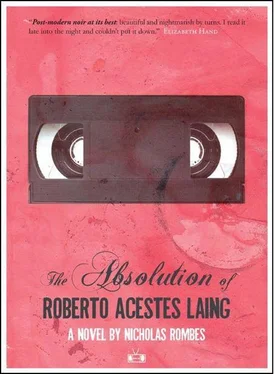
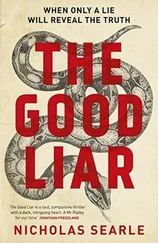
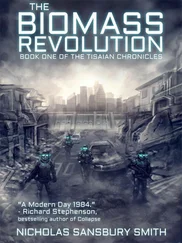
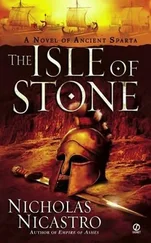
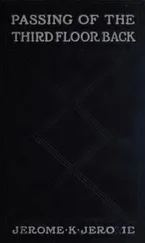


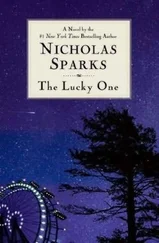


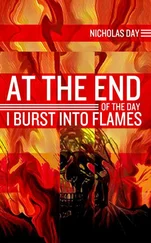

![Nicholas Timmins - The Five Giants [New Edition] - A Biography of the Welfare State](/books/701739/nicholas-timmins-the-five-giants-new-edition-a-thumb.webp)